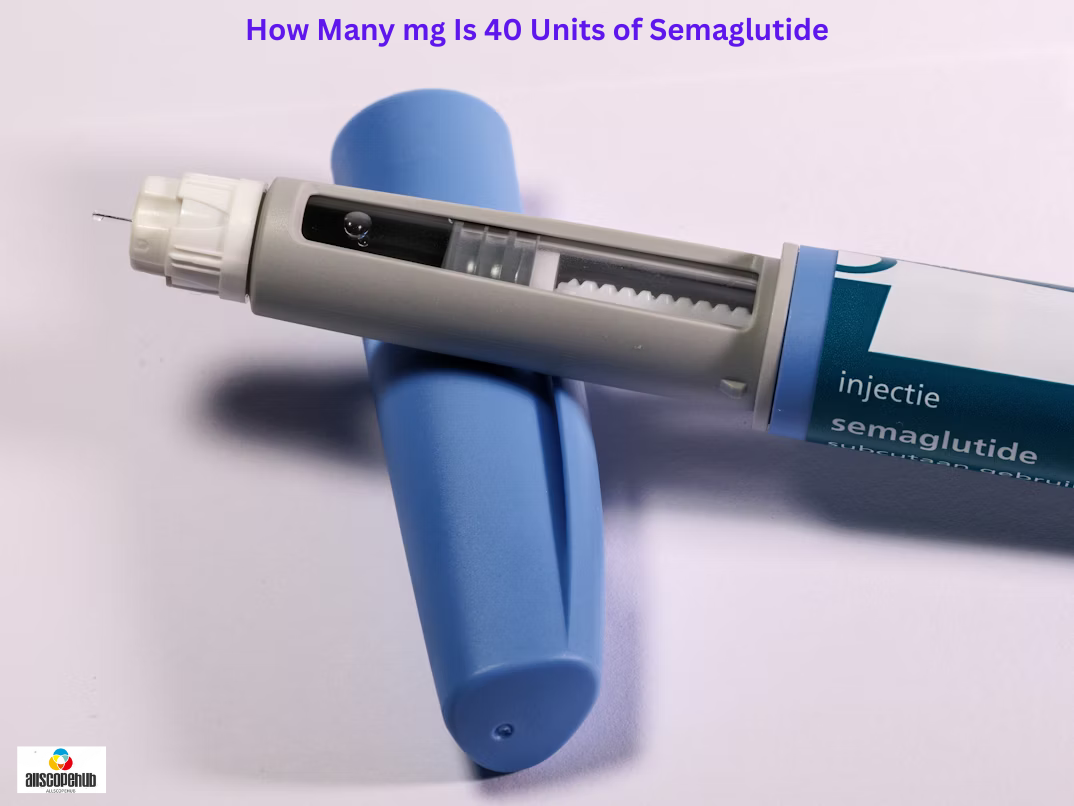Understand Your Dose. Protect Your Health. Feel in Control.
Let’s be honest—figuring out your medication dose shouldn’t feel like a math test. But if you’re using semaglutide and staring at a syringe or pen, wondering how many mg is 40 units of semaglutide, you’re not alone. It’s a question that many people ask, and it’s essential. This medication helps manage diabetes and supports weight loss, but only when taken correctly. Making sense of the numbers matters. So let’s walk through it, step by step, in plain English.
How Many mg Are 40 Units of Semaglutide?
Semaglutide comes in different strengths. The way your dose is measured depends on the type of product you use. Some are pre-filled pens. Some come as vials. But here’s the deal: 40 units don’t mean the same thing for everyone.
Most semaglutide pens are set up so that 1 mg equals 100 units. That means:
- 10 units = 0.1 mg
- 20 units = 0.2 mg
- 40 units = 0.4 mg
But this isn’t true for all pens. Some compounded versions or different brands might use a different scale. Always check your prescription label or ask your pharmacist.
Knowing your dose helps you avoid under- or overdosing, which could mess with your progress. If your pen says 2 mg/mL and you’re injecting 0.2 mL, that equals 0.4 mg. Simple? Mostly. But always double-check.
For official guidance on semaglutide dosing, you can refer to the FDA’s drug information database.
What 40 Units of Semaglutide Means for Weight Loss or Diabetes Treatment
If you’re taking 40 units, that usually means you’re at a mid-level dose. You may have already titrated up from a lower amount. That might be part of a long-term plan from your doctor.
For weight loss, people might eventually work up to higher doses, like 1 mg or even 2.4 mg weekly. But 40 units, or 0.4 mg, might be part of an early stage. For diabetes, your dose might vary depending on your blood sugar and how your body responds.
Some people feel unsure about this point. Maybe you wonder, “Is 40 units enough?” Or “Am I doing something wrong?” These thoughts are every day. Everyone’s body responds differently. What matters is how your blood sugar or weight changes over time. So keep tracking. And don’t rush.
Is It Safe to Take 40 Units of Semaglutide?
Yes, in most cases. But, like all medications, context matters. For many adults, 40 units (or 0.4 mg) is considered a safe and effective dose. Still, it’s not about just being “safe” — it’s about whether it’s right for your body.
Watch for side effects, especially:
- Nausea
- Vomiting
- Diarrhea
- Dizziness
If you’re feeling off or worried, always reach out to your doctor. Don’t guess. And never adjust your dose without medical advice.
You might be thinking, “What if I injected more than 40 units by mistake?” Don’t panic. Accidents happen. Just call your provider or local pharmacy and explain what happened. They’ll guide you through it.
For broader advice on safe medication use and side effects, the Mayo Clinic’s semaglutide overview offers reliable insight.
How to Measure and Inject Semaglutide Properly
Injecting semaglutide can feel intimidating at first. But with the proper steps, you can make it part of your weekly routine.
Tips for safe measurement:
- Know your pen strength: Look at the label.
- Use the correct needle size and syringe if you’re not using a pen.
- Double-check units before injecting.
- Clean the injection site.
- Inject under the skin, usually in the stomach, thigh, or upper arm.
Common mistakes to avoid:
- Misreading the syringe (especially with compounded semaglutide)
- Forgetting to rotate injection sites
- Skipping doses because of fear or confusion
It’s okay to feel nervous. But with a bit of practice, you’ll feel more confident.
When to Talk to Your Doctor About Adjusting Your Dose
You might reach a point where 40 units don’t feel like it’s doing enough. Or it may feel too much. Here’s when to bring it up with your healthcare provider:
- Your blood sugar levels are still too high.
- You’re not seeing expected weight loss.
- You’re experiencing ongoing side effects.
- You feel faint, shaky, or nauseous after injecting.
Don’t wait for a crisis. If you feel like your dose isn’t working, say something. Your doctor can help adjust the amount or timing.
Keep a journal. Log your doses, your meals, how you feel, and what changes you notice. That record can help your provider tailor the plan just for you.
How to Know If 40 Units Is Right for You
Not everyone will respond the same way to semaglutide. That’s just a fact. Your response might depend on factors like your age, weight, metabolism, other medications, and overall health. So, is 40 units the right fit?
Here are a few signs:
- Your appetite is more manageable.
- Your weight is gradually coming down.
- Your blood sugar levels are more stable.
- Side effects are minimal or tolerable.
And here are signs you might need an adjustment:
- You’re constantly hungry or having intense cravings.
- You feel weak, dizzy, or nauseous after injections.
- There’s no noticeable change in your weight or sugar readings after several weeks.
If you’re unsure, tracking your symptoms and discussing them with your provider is the best next step.
You Deserve Clarity About Your Dose
Understanding how many mg is 40 units of semaglutide isn’t just about numbers. It’s about confidence, safety, and making real progress with your health. Medication should never feel like guesswork. You deserve clear answers, not confusion.
If you’re ever unsure about your dose, speak up. Talk to your provider. Ask the pharmacist. Reach out to someone who can guide you.
And if this is part of your first step on semaglutide, or you’re adjusting your dose again, know this: You’re doing your best. And that counts.
We’re here to help people like you get the clarity they need. If you have questions or need a safe place to learn more, we’re just a message away.
Let today be the day you stop second-guessing your dose. You’ve got this.



